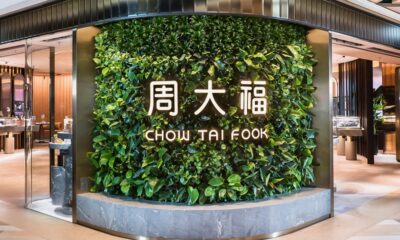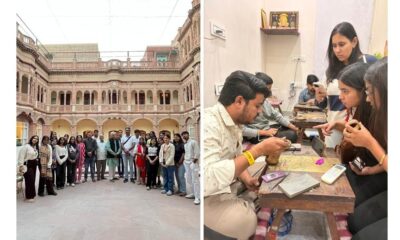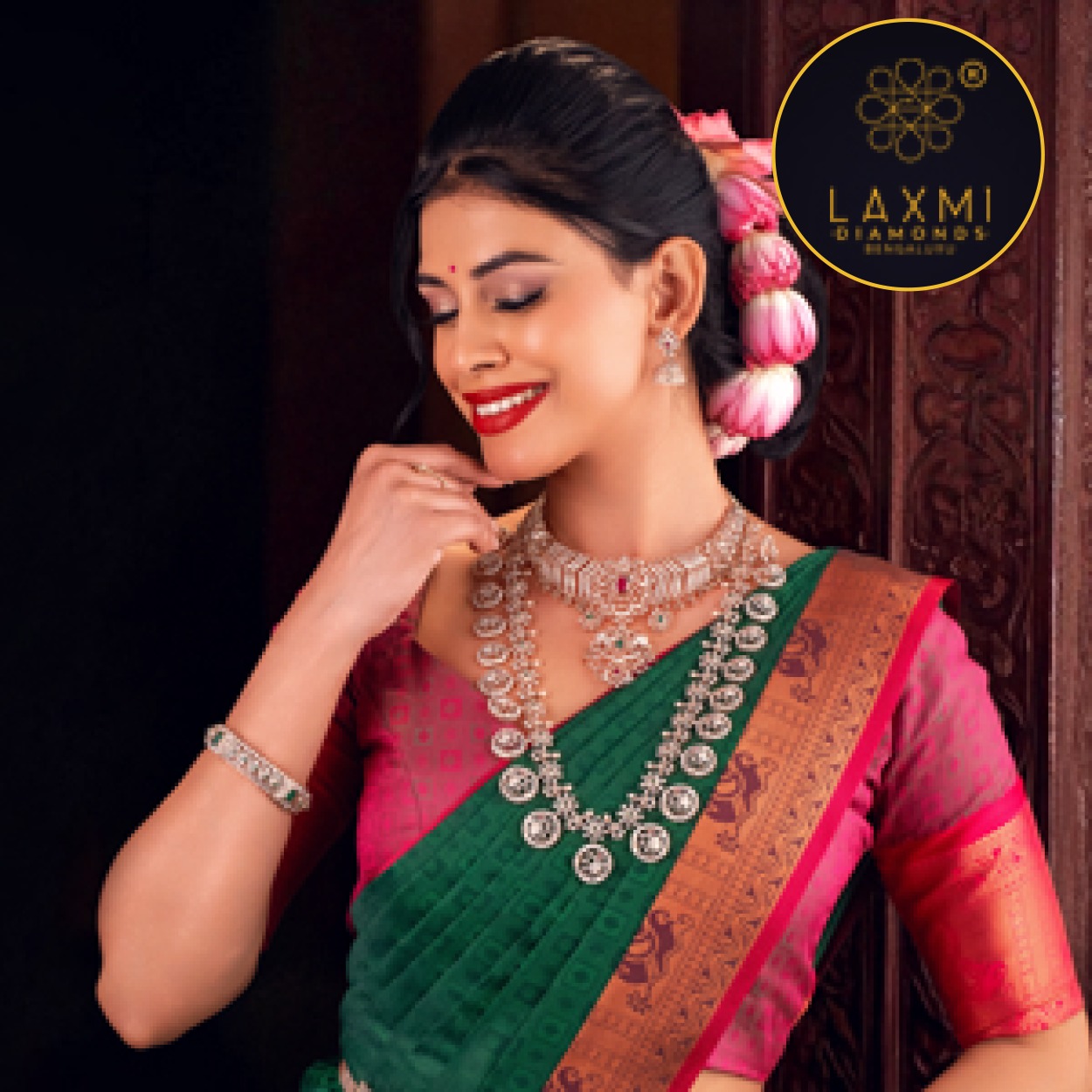By Invitation
Golden Rule II

Planogram and Processes for Replenishment of Non-fast movers – Part 2
L.R.Natarajan, Partner- Strategy and Systems Consulting
LRN has worked at senior level positions in companies like Eicher Motors, Hero Motors, Greaves Cotton, Ashok Leyland, and Hindustan motors. His last employer was Titan Company limited. Eleven years in Titan Company limited (eight years in Tanishq) and retired as CEO for the new business division. LRN was also heading the innovation council at Titan and was an active member of Tata Group Innovation Forum.
LRN had successfully spearheaded the TOC implementation in Tanishq retailing.LRN had started a school for Innovation in Titan and the school had produced over 400 trained innovators.
LRN also undertakes consulting assignments from corporate companies on Strategy, Retail excellence and Innovation. He has recently authored two books, a book on Innovation titled “The 9 Nuggets of Innovation” and a book on retailing titled “Demystifying Retail” – The Four golden rules.

Prabhakar Mahadevan, Founder Director of Strategy and Systems Consulting & Focus and Flow
Technologies Pvt Ltd
Prabhakar is a certified Theory of Constraints consultant (TOC) by Goldratt Schools Israel, certified expert on TOC by TOCICO (www.tocico.org) & is associated with TOC for the last 22+ years.
Through his consulting companies,Prabhakar and his colleagues are involved in several comprehensive TOC consulting projects across several industry verticals such as fashion jewellery, fast moving consumer goods, consumer durables, automotive OEM, capital machinery, pharmaceutical, heavy engineering, fashion retail etc.

In our last article we have seen the methodology for arriving at the Ideal Planogram. In this article we will understand the processes suggested for maintaining the Ideal planogram by having the right replenishment process.
- Replenishment Process (for large retailers)
For the merchandise selling under the category of fast-mover, we had explained in the earlier article how the replenishment is to be done. I will explain here, the methodology to be followed for replenishment against sale of a non-fast-mover.
To implement the suggested process, the pre-requisite lies in creating a Design bank. Therefore, let us first try and understand everything about the Design bank.
- What is Design bank?
- What should be the size of a Design bank?
- What are the pre-selection processes for a design to appear in the design bank?
- The process of replenishment using the design bank
- The advantages of using the design bank
- How to keep the design bank Dynamic?
- Design Bank
What is a Design bank?
A design bank is a collection of pre-selected designs (with three agencies short listing) to improve the probability of sale. The design bank should cover all the line items (Category/ Sub- Category/ Weight band level = Line item) appearing in the largest show room in the retail group
What Should be the size of Design bank
To arrive at this number, for the largest store, one should refer to the sales from non-head age band, line item wise for the last one year. Having done this, the design bank should have options to cover, line item wise 6 months sale. For example, for a line item, Bangle/ Filigree/ 10-12 grams, the sale from non-head age band is 40 in a year, the design bank should have 20 varieties of design.
The computation as per the example given above must be done for all the line items appearing in the Ideal Planogram of the largest store.
If the 6 months requirement for some of the line item is less than 3, the design bank should have a minimum of 3 design variants.
What are the selection processes for a design to appear in the design bank
For a given line item if the computed number of designs to appear in the design bank is 20 (1x), then the vendor base should be asked to showcase 60 designs (3x). These 60 designs should be reviewed by the Senior store staff and the senior merchandiser in bringing it down to 40 (2x). The shortlisted 40 designs again need to be filtered through a customer meet in picking the final 20 (1x) designs to be showcased in the design bank. By repeating this process for all the line items the design bank can be made ready with a set of designs with much higher probability of selling.
The Process of replenishment using the design bank
Once the design bank is in place, all the stores should replenish their line- item wise non-head sale only from the design bank. It is important for the store to replenish the line item sold (at Category/ Sub- Category/ Weight band level) only with the similar variant belonging to the same line item from the design bank. Example: if a design variant belonging to Bangle/Filigree/10-12 grams has got sold in the non-head age band, then the store should pick an alternate design variant only from design options listed under Bangle/Filigree/10-12 grams.
Also, there should be appropriate software (or excel) for capturing each design variant wise pick and sale from the design bank (as and when designs from design banks are picked against sale of a variant from non-head age band happens). Over a period, design bank will have line item wise/ variant wise pick and sale data which will be a valuable guide for stores in selecting the variants with higher probability of sales.
The advantages of using the design bank for replenishing sale from non-head age band
How to keep the design bank dynamic
After computing the design bank size and selecting designs based on multi-tiered selection process explained above, retailer should build the design bank with first with 50% of the design variant requirement. After this, every alternate month, 17% of design bank size should be added. But doing this, the design bank requirement will be met by the end of 6th month. From the 8th month onwards, when new designs equivalent to 8% of design bank size is added, the same number of non-performing designs from the design bank should be removed. This process ensured the design bank is kept dynamic and the size would also be around (after addition and deletion) the 6-month non-head sale requirement.
Example: Design bank size for Bangle/Filigree/10-12 grams is 50 designs. In month 0, build the design bank with 25 designs and get started with doing alternate replenishment from the design bank. In months 2, 4, and 6, add 8 new designs to the design bank. So, by the end of month 6, design bank size would be 49. In month 8, when 8 new designs are added, remove 8 old non-performing designs which was added in month 0. Repeat this process every alternate month and keep the design bank fresh and dynamic.
Summing up
To achieve the best inventory effectiveness, besides the processes suggested for fast-movers, two things are to be done:
- One must arrive at the right planogram, by doing 2 X 2 analysis
- A Design Bank showcasing merchandise-wise unique designs should be made visible to showrooms ((along with sales and pick data). This will enable the individual showrooms to pick the merchandise with good sales history, when a non-fast-mover sells.
Happy Retailing
L.R. Natarajan
M. Prabhakar
By Invitation
GSI teaches the art of selling jewellery, with training as unique as your brand
By Ramit Kapur, MD, GSI India
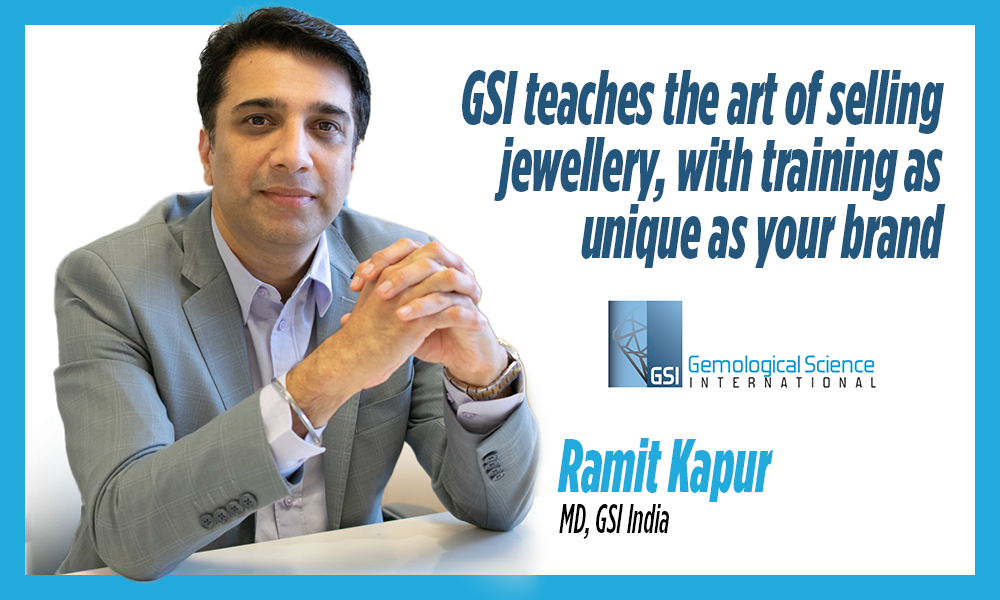
In jewelry retail, the real challenge isn’t having beautiful products, it’s getting customers to believe in them. Every day, sales teams face tough questions that reflect common consumer concerns: ‘How much of this piece is real gold, and how much is just Laakh behind the Polki?’ ‘Does a gemstone only hold value if it comes from a specific origin, like an emerald from Colombia versus one from Russia?’ ‘This diamond is SI clarity; why should I buy it when it’s not flawless?’ These are not small queries; they are make-or-break moments in the sales process.”
At GSI, we know that overcoming these objections requires more than product knowledge; it takes confidence, context, and the ability to tell the right story. That’s why our retail sales training programs such as the “Jewelry Excellence Program” are built not as cookie-cutter modules but as customized, brand-specific experiences designed to prepare teams for exactly these moments.
Customization is Key: Training Built Around What You Sell
The foundation of our approach lies in customization. Our training spans every aspect of the jewelry business; gemstones, diamonds, polki, metals, sales skills, jewelry care, and more. This journey begins by engaging with retailers to understand their unique goals and what they wish to achieve and communicate to their customers through their sales teams. Whether it’s improving customer engagement, boosting sales, or enhancing product knowledge, every program is tailored to align with those objectives.
We don’t walk in with a generic presentation. We start by studying the retailer’s various jewelry categories and their unique propositions in their collections. If your brand thrives on diamonds, we focus on teaching your team how to sell across different quality grades, highlighting factors beyond the 4Cs that influence value. If polki is central, we equip your staff to handle queries about its craftsmanship and value . If your store experiments with colored stones, we give your team the ability to sell a lesser-known garnet with the same conviction as a ruby.

This begins with a pre-program audit and mystery shopping : observing your store’s customer base, communication style, and brand personality. The result? A training program that is not only technically accurate but also culturally aligned with your business. No two retailers are the same, and no two GSI training programs are, either.
From Product to Pitches: Building Salespeople Who Sell Experiences
Knowledge alone doesn’t close sales. The ability to build rapport, handle hesitation, and guide customers to the “yes” does. GSI’s programs cover the full arc of retail selling, from product to pitches.
We use role-playing not as stale scripts but as live simulations of real scenarios your staff faces daily. Whether it’s explaining why a F-color diamond and a H-color diamond are both excellent buys, or learning how to turn a casual browser into a lifelong client, our methods prepare sales teams to create memorable experiences from the first hello to the final handshake and beyond.
Learning That Sticks: Continuous Assessment for Continuous Growth
Training is not a one-off exercise. At GSI, participants take an initial assessment, and then a follow-up assessment in the coming months. This ensures knowledge retention, highlights top performers, and shows management where to provide additional support. It also helps map future leaders, identifying which team members are ready for more responsibility.
The GSI Difference: Faculty, Data, and Industry Trust
Our edge comes from who we are. As a global gemological lab, we sit on real-time data, research, and trends that most firms simply don’t have access to. And our faculty isn’t made up of trainers-for-hire; they are seasoned experts who’ve graded and tested stones, advised brands, and shaped markets across continents. They bring that authority straight into the classroom.
This combination of scientific insight, retail acumen, and faculty expertise is why leading brands trust GSI to prepare their teams for the realities of modern jewelry retail.
Certification is the Last Point, Knowledge Comes First
Here’s a truth many overlook: certificates don’t sell jewelry, people do. A certificate may close the conversation, but it’s the sales team’s knowledge, confidence, and storytelling that open it. That’s why GSI puts human expertise ahead of paper credentials. We train teams to own the conversation, handle objections with authority, and make customers feel secure before the certificate even enters the discussion.
Because at the end of the day, selling jewelry is not just about the product in the box, it’s about the people behind the counter. And that’s where GSI makes the difference.
-
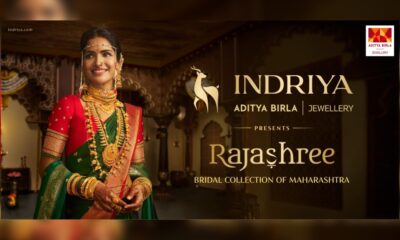
 BrandBuzz2 weeks ago
BrandBuzz2 weeks agoIndriya unveils Rajashree, the Bridal Collection of Maharashtra
-
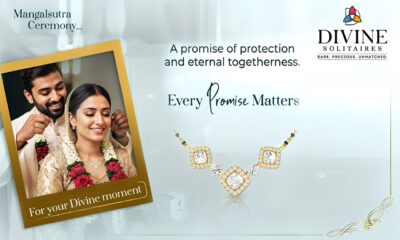
 BrandBuzz3 hours ago
BrandBuzz3 hours agoDivine Solitaires’ new wedding campaign ‘Every Promise Matters’ unveils elegant diamond Mangal Sutras and their emotions
-
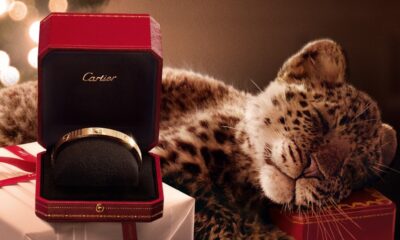
 BrandBuzz4 hours ago
BrandBuzz4 hours agoCartier’s Iconic Panther Leaps Into the Holidays with a Cute New Tale
-

 International News4 hours ago
International News4 hours agoElevated rate cut expectation boosts precious metal prices AUGMONT BULLION REPORT




